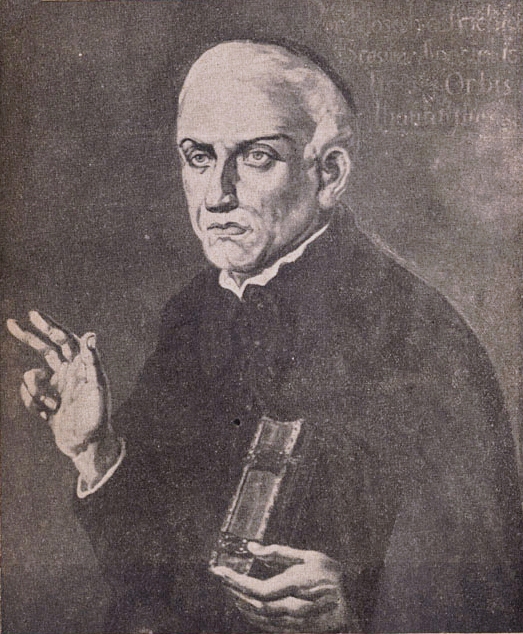Santuário Nacional De São José De Anchieta on:
[Wikipedia]
[Google]
[Amazon]
The Santuário Nacional de São José de Anchieta (in English: National Sanctuary of Saint Joseph of Anchieta), formed by the Igreja de Nossa Senhora da Assunção (Church of Our Lady of the Assumption) and areas of the former
 The original building was made in stone and lime in 1579 by Joseph of Anchieta, in the town of Reritiba, now the city of Anchieta. A heritage site of significant historical, cultural, and religious importance, it was fundamental in the process of
The original building was made in stone and lime in 1579 by Joseph of Anchieta, in the town of Reritiba, now the city of Anchieta. A heritage site of significant historical, cultural, and religious importance, it was fundamental in the process of
Catholic churches by country
Museums in Brazil
History of Brazil
National heritage sites of Espírito Santo
Roman Catholic churches in Brazil
Jesuit
, image = Ihs-logo.svg
, image_size = 175px
, caption = ChristogramOfficial seal of the Jesuits
, abbreviation = SJ
, nickname = Jesuits
, formation =
, founders ...
residence, is a Catholic temple located on a hillside on the Benevente River
The Benevente River is a river of Espírito Santo state in eastern Brazil.
See also
*List of rivers of Espírito Santo
List of rivers in Espírito Santo (Brazilian State).
The list is arranged by drainage basin from north to south, with respec ...
in the municipality of Anchieta, in Espírito Santo, Brazil.
The Catholic Church named the space the National Sanctuary of Saint Joseph of Anchieta due to his canonization
Canonization is the declaration of a deceased person as an officially recognized saint, specifically, the official act of a Christian communion declaring a person worthy of public veneration and entering their name in the canon catalogue of ...
by Pope Francis in 2014, his appointment as Brazil's co-patron saint in 2015, and because it was the place chosen by the priest to spend his last days.
In 1965, the Saint Joseph National Museum was created on the site, which preserves images, old liturgical objects from the church and objects from the former village of Reritiba.
History
 The original building was made in stone and lime in 1579 by Joseph of Anchieta, in the town of Reritiba, now the city of Anchieta. A heritage site of significant historical, cultural, and religious importance, it was fundamental in the process of
The original building was made in stone and lime in 1579 by Joseph of Anchieta, in the town of Reritiba, now the city of Anchieta. A heritage site of significant historical, cultural, and religious importance, it was fundamental in the process of catechizing
Catechesis (; from Greek: , "instruction by word of mouth", generally "instruction") is basic Christian religious education of children and adults, often from a catechism book. It started as education of converts to Christianity, but as the re ...
the indigenous people of the Espírito Santo captaincy. In 1759, the village of Reritiba was elevated to the status of Vila de Benevente and during this period the complex underwent significant changes to adapt to the new reality. In 1797, the sacristy of the church was demolished after it was elevated to the category of parish church, and in 1804, the residence was adapted to serve as the town hall, public jail, courthouse, judge's quarters, and parish house. In the 19th century, the inner courtyard and part of the south and west wings were used as the town cemetery. In 1928, the residence was bought by Bishop Helvécio and returned to the Jesuits so that they could continue their evangelizing mission. On September 21, 1943, the complex was listed by the National Institute of Historic and Artistic Heritage (IPHAN) due to its importance in Brazil's history and of the Baroque
The Baroque (, ; ) is a style of architecture, music, dance, painting, sculpture, poetry, and other arts that flourished in Europe from the early 17th century until the 1750s. In the territories of the Spanish and Portuguese empires including t ...
imagery. In 1965, the São José de Anchieta National Museum was founded on the site.Not to be confused with the Anchieta Museum, located in Pátio do Colégio, São Paulo.
From January 1994 to June 1997, the Anchieta Jesuit Complex Restoration Program began, which made it possible to recover the original features of the complex, as well as the archaeological surveys.
On April 24, 2015, during the 53rd General Assembly of the Episcopal Conference of Brazil (CNBB), the temple was officially declared the National Sanctuary of St. Joseph of Anchieta.
Notes